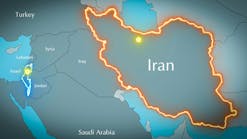IS E&P EXECUTIVE COMPENSATION ALIGNED WITH INVESTORS' INTERESTS?
NICHOLAS D. CACCHIONE, TOM BIRACREE, OIL & GAS FINANCIAL ANALYTICS LLC, FORT LAUDERDALE, FL
WITH PROFOUND STRUCTURAL CHANGES roiling the upstream oil and gas industry, a critical question for shareholders is whether their interests are aligned with compensation incentives of senior E&P executives. In many cases, the answer may be "no", based on our analysis of the cash bonus targets which make up more than 60% of cash compensation for the CEOs of nine large US E&P companies. Although oversupply has dragged down commodity prices and severely depressed returns, reserve and production growth targets still represent the largest share of the cash bonus pool for these companies. Shareholder return is at the bottom of the list. Not only developing but also implementing successful strategies to adapt to the dramatic plunge in commodity prices is crucial to the survival of even the largest firms. Shrewd investors need to go beyond the presentation PowerPoints to determine if management is properly committed and incentivized to adapt to the new realities.
For more than a decade, oil and gas companies stepped on the accelerator, boosting investment to build positions in burgeoning North American unconventional resource plays unlocked by the shale revolution. Producers first applied the new technology to natural gas, dramatically changing the supply/demand balance in North America. When soaring output dampened natural gas prices in 2009, investment shifted to wet gas and oil, with rapidly increasing output the main goal. The industry looked to be entering a golden age, as production continued to climb and realized prices tripled from a little over $20 per boe in 2002 to over $60 per boe in 2013.
However, the growth in output and revenue that captured headlines masked a harsh reality: higher costs enflamed by overly aggressive capital investment to meet growth targets had crippled returns. The average return on net capitalized costs fell by more than half from 2002 to 2013, declining steadily since 2005. By late 2014, oversupply triggered a steep fall in oil prices, just as it had for natural gas prices in 2009 and natural gas liquids (NGL) prices in 2012. The price plunge dried up profitability. And the reckless capital investment triggered debt increases that threaten the financial stability of many E&P firms.
The industry responded with announcements of dramatic reductions in drilling and capital spending and a new focus on slashing costs and high grading assets. Such strategic shifts require highly skilled and motivated corporate leaderships. To investigate the latter, we decided to examine the specific targets that contribute the lion's share of the compensation for senior management in the North American E&P industry.
We examined shareholder proxy statements for nine large E&P companies: Anadarko Petroleum, Apache Corp., Chesapeake Energy, ConocoPhillips Devon Energy, EOG Resources, Marathon Oil, Noble Energy, and Pioneer Natural Resources. These companies primarily use formulaic performance metrics in their annual incentive plans. We allocated these incentives into six significant categories: reserve and production growth; operational metrics; strategic actions; profitability and cash flow; safety; and shareholder return.
Despite the plunge in returns, reserve and production growth was still the largest hurdle for executives to earn their cash bonuses in 2014, averaging 25% of their payout. This level is representative of the entire industry, as a study by consulting firm Alvarez & Marsal showed that 87% of 100 top US E&P firms employed a production growth metric and 66% included a reserve growth metric in executive compensation. This heavy weighting demonstrates the emphasis company board of directors put on volumetric increases, especially in light of the lesser importance given to profitability and cash flow generation.
In our study universe, Anadarko Petroleum had the largest allocation toward volumetric increases, with 25% of its incentive plan geared to adding at least 492 million barrels of oil equivalent (boe) of reserve additions and another 25% targeting oil and gas sales volumes of 298 million boe or higher. Chesapeake Energy had 40% of its cash bonus targeted to growth metrics: 20% to production growth in excess of 3% and an additional 20% for organic addition of 300 million boe of proved oil and gas reserves. ConocoPhillips was the only company in the group that set no production or reserve growth targets for its leadership team. Only 8% of the total cash bonus pool for EOG was tied to an output increase and none to reserve growth.
The second largest benchmark for executives, accounting for 20% of the average cash bonus, was a category called operational metrics, which included production costs, reserve replacement costs and rates, and capital spending. Marathon Oil had the largest allocation amounting to 50% of its executive incentive compensation. In order for executives to earn this tranche of their bonus, Marathon Oil needed to keep cash costs below $12.75/boe, finding and development costs below $27/boe, and three-year finding costs on its resource base below $4/boe. Reducing production costs, a critical issue in the low commodity price environment, is a significant target only for Noble Energy.
Strategic actions, primarily successful completion of assets sales, was the third highest category. For example, 35% of Apache's corporate objectives were based largely on the rationalization of its LNG interests and the sale of non-core assets. A portion of EOG's cash bonus was based on divesting $200 million of non-core assets.
Surprisingly, profitability and cash flow generation was well down on the list, even though generating profits for shareholders should be a prime mandate for management teams. Chesapeake Energy had 20% of its cash incentive compensation tied to EBITDA/boe ratio of $21. Noble Energy had 7.5% of its cash incentive compensation targeted to meeting a discretionary cash flow benchmark, and another 7.5% meeting a free cash flow goal. Marathon Oil and Pioneer Natural Resources had no benchmark specifically targeting profitability or cash flow.
Safety goals accounted for 11% of the average executive corporate bonus, including 20% for ConocoPhillips and Chesapeake. ConocoPhillips had all 20% targeting three benchmarks: the total recordable rate, the lost workday rate, and process safety. Chesapeake Energy split its cash bonus between the percent reduction in the total reportable incident rate and the percentage reduction in reportable spills.
The final cash bonus benchmark is total shareholder return, which accounted for only 8% of the collective cash payout. Only four companies had their incentive plans geared toward total shareholder return, presumably in the belief that company executives have limited ability to affect stock prices in the short term. Noble Energy had 23% of its cash payout based on relative and absolute total shareholder return. Fifteen percentage points were targeted to Noble Energy being in the top 50th percentile of shareholder return for its self-assigned peer group. An additional eight percentage points could be awarded based on a qualitative evaluation of shareholder return.
As the industry continues to struggle and little price relief is in sight, we believe assessing management performance will become increasingly important for investors. One factor will be if and how boards of directors realign the cash bonus targets for executives in 2015. Will board of directors reduce their focus on growth in order to incentivize managers to cut costs and reduce debt to stabilize returns until commodity prices improve? How much emphasis will be placed on asset sales and other portfolio adjustments? Investors can find this crucial information in each company's proxy statement (Schedule 14A) filed annually with the US Securities and Exchange Commission. Within the proxy statement, the compensation data is contained in the Summary Compensation Table. The performance metrics data is contained within the discussion regarding the company's compensation program.
ABOUT THE AUTHORS
Nicholas D. Cacchione, CFA [[email protected]] is the founder of Oil & Gas Financial Analytics LLC. Cacchione specializes in the benchmarking and valuation of upstream oil and gas operations. His benchmarking expertise primarily relates to the areas of upstream capital spending, reserve replacement and finding and development costs, and upstream profitability. Cacchione has over 25 years' experience in the analysis of the oil and gas company and industry trends including nearly 20 years with John S. Herold Inc. and IHS Inc. Cacchione was the primary author of the Global Upstream Performance Review. He also has expertise in the analysis of Master Limited Partnerships. He earned a BBA in accounting and a MBA in finance from Iona College and has earned the Charted Financial Analyst (CFA) designation.
Tom Biracree [[email protected]] is Editorial Project Director at Oil & Gas Financial Analytics LLC. He was senior principle editor at John S. Herold Inc., then IHS Inc., for 15 years. He led the senior editorial team for IHS Energy Insight research and was responsible for structuring and content editing valuation and transaction research. Biracree wrote the daily Herold Oil Headliner, a daily newsletter aimed at senior industry and financial executives. He was co-author of the Global Upstream M&A Review and contributed to the Global Upstream Performance Review. He is also the author of more than 100 published books.




